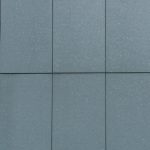Installing an air source heat pump offers a practical way to lower energy bills and reduce carbon emissions. Understanding the installation steps, costs, and necessary home adaptations helps ensure the system performs efficiently. Choosing a qualified installer and exploring available subsidies can maximize benefits while minimising disruptions during the upgrade process.
Comprehensive Guide to Installing an Air Source Heat Pump
Air source heat pump (ashp) installation involves a sequence of carefully coordinated steps, starting with a detailed site assessment. This initial phase ensures the chosen system matches the property’s specific needs, considering factors like insulation, existing heating infrastructure, and available outdoor space.
Avez-vous vu cela : How Is Phytoremediation Being Used to Clean Up Contaminated Sites in the UK?
Also read : How Can UK Residents Participate in Wildlife Conservation Initiatives?
The installation process begins with inspecting the site to evaluate the suitability for an air source heat pump, including checking the space for the outdoor unit, which is typically about the size of two wheelie bins. The indoor component, a hot water cylinder, is placed in a convenient, accessible location.
A voir aussi : Achieve your dream smile with a cosmetic dentist in Leeds
Following assessment, the installation team proceeds with mounting the outdoor unit and connecting it to the indoor system, which involves drilling through walls—an activity that must comply with local regulations. Pipework connecting these components is insulated for efficiency, and radiators may need upgrading or replacement to operate optimally at lower water temperatures.
In parallel : Unlock your a-level maths potential with expert tuition
The actual installation generally takes around three days, though complexity can extend this timeframe. For example, homes requiring extensive pipework, underfloor heating, or groundworks for ground source pumps will experience longer installation times. Homeowners should expect some disruption, such as temporary loss of heating or hot water, but these inconveniences are usually manageable within the few days of work.
Professional installation is essential. Skilled installers certified under schemes like the Microgeneration Certification Scheme (ashp) ensure systems are correctly placed, safely connected, and optimized for performance. DIY approaches risk inefficiency, safety issues, and invalidating warranties.
Various regional providers, including those in Hastings, have developed specific expertise for local building requirements and climate considerations. It is advisable to obtain at least three quotes and verify credentials before proceeding.
Understanding the Installation Process of Air Source Heat Pumps
Site Assessment and Planning
The installation process for an air source heat pump begins with a thorough site inspection for installation suitability. Qualified installers examine your home’s insulation, available space for new equipment, and the existing heating system. During this step, heat loss calculations are performed to ensure the selected heat pump will meet your household’s needs. Adequate insulation and proper radiator sizing improve overall system efficiency and contribute to reduced installation cost over the equipment’s lifespan. Installers assess whether microbore pipes need to be replaced, as wider pipework is often required by modern systems.
Equipment Selection and System Design
Next, choosing the right heat pump size and type is essential. System design must match the heating demand calculated in the planning stage. For the best results, installation requirements and regulations, including compliance with the latest UK standards and MCS certification, are reviewed. Some homes will require radiator upgrades or underfloor heating to maximize efficiency, especially since heat pumps operate at lower water temperatures compared to traditional boilers. Guides and manuals from leading brands, such as Mitsubishi, Daikin, Vaillant, or Panasonic, can assist in understanding brand-specific installation details and cost factors before committing.
Outdoor Unit Placement and Groundwork
The heat pump unit is usually positioned outside, occupying space roughly the size of two wheelie bins. Proper unit placement affects noise levels and weather exposure. Depending on property layout and local climate effects on installation outcomes, an outdoor plinth or pad may be built to stabilize and elevate the unit. For more complex systems, groundwork might be needed, but the installation process for air source heat pumps generally avoids major excavations, helping to keep the installation cost and disruption lower compared to ground or water source models.
Indoor Installation Procedures
Indoors, the installer mounts the system’s control unit and hot water cylinder, sometimes requiring modifications to pipework and radiators. Integration with your existing heating system may depend on the age and configuration of your property. Electrical requirements for installation are also addressed, including safe connection to the home’s supply and upgrading panels if needed. By following a detailed installation guide, professionals ensure each step is compliant with building codes and safety practices. The correct installation is vital for long-term durability and efficiency.
System Testing and Commissioning
Once assembled, post-installation system testing is essential. The system is flushed, filled, and checked for leaks, and controls are calibrated. Installers complete checklists to confirm that the installation process meets required standards. These procedures ensure the heat pump operates as intended and delivers anticipated energy savings. Performance checks are explained to homeowners, making it easier to monitor efficiency and plan for future maintenance considerations after installation. An MCS certificate is provided to verify the installation meets regulatory and quality benchmarks.
Disruption During Installation
Home modifications are often needed, but professional installers take steps to minimize inconvenience. The average installation timeline and steps for an air source heat pump is two to five days, depending on the system’s complexity and home requirements. It is common for heating and hot water to be unavailable for a short period. Upgrades to radiators or underfloor heating—sometimes during wider renovations—can extend the schedule and impact daily routines. Communicating with your installer about timing and planning for installation around home renovations helps reduce this impact. Proper preparation can also help optimize the installation process and keep installation cost within budget expectations.
Cost, Regulations, and Finding Qualified Installers
Typical Installation Costs and Budgeting
Air source heat pump installation cost is a key consideration for homeowners aiming to improve their home’s efficiency. The average price ranges for a full installation process generally fall between £11,000 and £14,000, but figures can reach up to £18,500 before grants, especially if extra work such as radiator upgrades or pipe replacements is needed. Installation cost fluctuations depend on several cost factors: property size, system complexity, and required home modifications for installation, including insulation improvements or new hot water cylinders.
To make the installation process more accessible, government incentives and subsidies are widely available. The Boiler Upgrade Scheme offers up to £7,500 in England and Wales, while Scottish homeowners may access grants or interest-free loans. When budgeting for installation, these support programs can significantly reduce your outlay and increase the potential for energy savings.
Regulatory Considerations and Permitting
Installation requirements and regulations provide a baseline for system safety, efficiency, and legal compliance. Most properties do not need planning permission for an air source heat pump, as recent changes classify many as permitted developments. However, site inspection for installation suitability is vital because special rules apply to listed buildings, conservation areas, and flats.
Installer certification is paramount. The Microgeneration Certification Scheme (MCS) is the main body certifying both installers and products within the UK. Homeowners must check that installations adhere to building codes and environmental impact standards. This includes ensuring proper heat pump unit placement, system integration, and the ability to receive an installation certificate. Certification also guarantees that your system meets criteria for government schemes and long-term maintenance planning.
Finding Certified and Experienced Installers
Finding qualified installers near me should start with the MCS find-an-installer tool, which provides a list of certified service providers with verified credentials. Evaluating installer credentials is crucial for quality and safety, along with reviewing installation guides and manuals from major brands like Mitsubishi, Daikin, Vaillant, and Panasonic. Engage with local regional installers and service providers (for example, in Norfolk or Somerset) that understand regional requirements and climate effects on installation outcomes.
Comparing professional installers and obtaining at least three quotes helps ensure the best value for your air source heat pump system, in line with industry standards for installation quality. Always check reviews, ask for evidence of recent installations, and verify post-installation support commitments. This due diligence maximizes the benefits of professional installation services, ensuring optimal operation, reduced disruption, and greater energy savings post-installation.
Preparation, Home Modifications, and Impact on Property
Insulation and Heating System Upgrades
The installation process for an air source heat pump stresses the importance of home insulation for peak efficiency. A key cost factor relates to whether you need to enhance wall or roof insulation before installation. Well-insulated homes can maximize the energy savings potential of air source heat pumps and reduce running costs. Often, older houses or those with solid walls may need added insulation, but, generally, extensive upgrades are not an absolute requirement. Upgrading radiators is commonly recommended—this means replacing smaller, less efficient units with larger double or triple panel radiators that operate effectively at the lower temperatures typical for heat pumps. Alternatively, underfloor heating works particularly well with these systems and might be considered in new builds or major renovations. An installation guide will specify if existing pipes need upgrades, as microbore pipework from earlier decades can restrict the required heat flow. Addressing these installation requirements improves both comfort and efficiency in the long run.
Property Suitability and Space Requirements
Site inspection for installation suitability focuses on both indoor and outdoor requirements. A typical air source heat pump unit is about the size of two wheelie bins and is situated outside, so space availability is essential. Indoors, a hot water cylinder also needs to be accommodated—modern tanks measure roughly 80cm by 80cm. The type of property, such as terraced homes, semi-detached houses, or flats, will shape installation requirements and may present site-specific constraints. For example, listed properties or homes in conservation areas may need additional permissions. Certain installation diagrams provided in installation manuals show that regional installers and service providers often customize heating solutions for complex or compact layouts, ensuring optimal performance without excessive disturbance. Adaptation is possible for almost any property, but professional installers will evaluate the best fit during the site assessment process.
Impact on Property Value and Environment
Air source heat pump installation can boost property value by making a house more attractive to eco-conscious buyers and reducing overall heating costs. A major benefit is the system’s environmental advantages: lower CO2 emissions contribute to a reduced carbon footprint. This aligns with energy efficiency goals and qualifies homeowners for government incentives and subsidies—these grants can significantly decrease installation cost, leading to heightened return on investment over time. The move away from fossil fuels also results in less dependence on fluctuating energy markets. Finally, integrating an air source heat pump frequently translates into long-term savings on utility bills, thanks to its reliance on renewable energy and robust system lifespan expectations post installation. These improvements are among the most compelling reasons for homeowners to undertake the necessary home modifications for installation.
Installation Timeline, Post-installation Care, and Troubleshooting
Typical Timeframes and Key Steps
Precision in the air source heat pump installation process is critical for reliable, long-term performance. Most air source heat pump installations, from initial site inspection for installation suitability to system commissioning, are completed in about three days, unless extensive upgrades—such as replacing microbore pipes or adding underfloor heating—are required. Complex layouts, larger properties, or integrating advanced controls may extend the installation timeline and influence the overall installation cost.
Several cost factors, including property size, the existing heating system, and required modifications, affect both the installation cost and scheduling. Weather considerations, such as planning outdoor work in milder months, are recommended for an efficient installation process. It’s important that qualified installers, ideally those with relevant installation training and certification courses, handle every phase to ensure compliance with installation requirements and regulations and optimize system placement.
Post-installation Checks and Maintenance
Thorough post-installation system testing follows installation to validate safety and functionality. Servicing forms a crucial part of maintenance considerations after installation—most manufacturers recommend annual checks to maintain warranties and system efficiency. Typical maintenance may include cleaning air filters, inspecting electrical requirements for installation, and ensuring the heat pump unit placement remains free of obstructions.
Troubleshooting installation issues is simplified when user manuals and troubleshooting guides are readily accessible. Common post-installation concerns—such as reduced heating output or automatic defrost cycles—are usually linked to installation process issues or unmet installation requirements and regulations. Professional installers will address such installation problems through established customer support after installation channels, especially when long-term maintenance planning is part of the service agreement.
Ongoing Performance and System Optimization
Ongoing seasonal adjustments and user training help owners maximize the energy savings potential and reduce their carbon footprint. Adjusting system settings and integrating with smart home systems are integral for optimizing heat distribution and comfort throughout the year. Monitoring performance using in-built digital controls or remote monitoring installation options helps identify any dip in efficiency or malfunctions fast.
The impact on home insulation and efficiency often translates directly to lower utility bills. Owners are encouraged to prepare for maintenance after installation by noting system alerts, scheduling professional checks, and reviewing warranty and service agreements post-installation to keep the system operating optimally for its expected lifespan.
In summary, following each step of the installation process attentively—from the installation timeline and steps to comprehensive post-installation system testing—ensures that air source heat pump adoption improves sustainability, reduces costs, and delivers reliable heating tailored to the property’s needs.
Resources, Incentives, and Expert Guidance
Financial Support and Grants
Government incentives and subsidies directly lower the up-front air source heat pump installation cost. In England and Wales, the Boiler Upgrade Scheme provides grants of up to £7,500 for those replacing fossil fuel systems, while Scotland offers similar support through Home Energy Scotland, often with grants or interest-free loans. These subsidies can reduce the average price ranges for installation by over half—making budgeting for installation more manageable for homeowners. Northern Ireland’s Sustainable Energy Programme delivers additional help tailored by circumstance. Applying typically requires proving property ownership, presenting a recent energy performance certificate, and confirming replacement of an old heating method rather than an existing heat pump.
These incentives are periodically revised, so always check eligibility before proceeding. Securing government incentives and subsidies not only slashes installation cost but can also enhance the long-term energy savings potential, making it easier to plan for both the installation process and future bills.
Educational Resources and Consumer Support
Homeowners are often encouraged to consult installation guides and manuals before a site inspection for installation suitability. Many organizations supply detailed guides, FAQs, and instructional videos to clarify installation requirements and regulations, including standard steps for professional vs DIY installation. For those eager to see successful installs, case studies and owner testimonials (such as Home Energy Scotland’s “Heat Pump Heroes” or visit-a-heat-pump services) illustrate common site-specific installation challenges and the impact on home insulation and efficiency.
Finding qualified installers near me is simplified through government-backed schemes like the Microgeneration Certification Scheme (MCS). These tools help compare professional installers, check for required accreditations, and even arrange visits to regional installers and service providers (for example, those operating in Norfolk or Somerset). Gaining first-hand insight into the installation timeline and steps through these resources optimizes preparedness for installation day and reduces stress about budgeting for installation.
Industry Standards and Professional Qualifications
Ensuring installer accreditation is fundamental. Only certified professionals meeting industry standards for installation quality should be chosen, with schemes like MCS ensuring compliance with both installation requirements and regulations. Such accreditation is critical for accessing government incentives and subsidies, protecting warranties, and confirming adherence to the safest industry best practices for installation safety. Installers should also demonstrate expertise in handling brand-specific installation details—such as those related to Mitsubishi, Daikin, Vaillant, or Panasonic systems—and guide you through necessary home modifications for installation.
Always request proper documentation, such as the air source heat pump installation certificate, after the project. This verifies a thorough post-installation system testing process and alignment with local building codes and environmental benefits of installation. Certification builds confidence in the durability and efficiency of your heat pump unit placement and the installer’s competence in troubleshooting installation issues.
Knowledgeable guidance, paired with robust financial support and adherence to clear industry standards for installation quality, ensures a smooth transition to a more energy-efficient home. Resources and incentives are key to lowering the installation cost, while professional training and consumer support guarantee a dependable, high-performing, and sustainable heating system.






